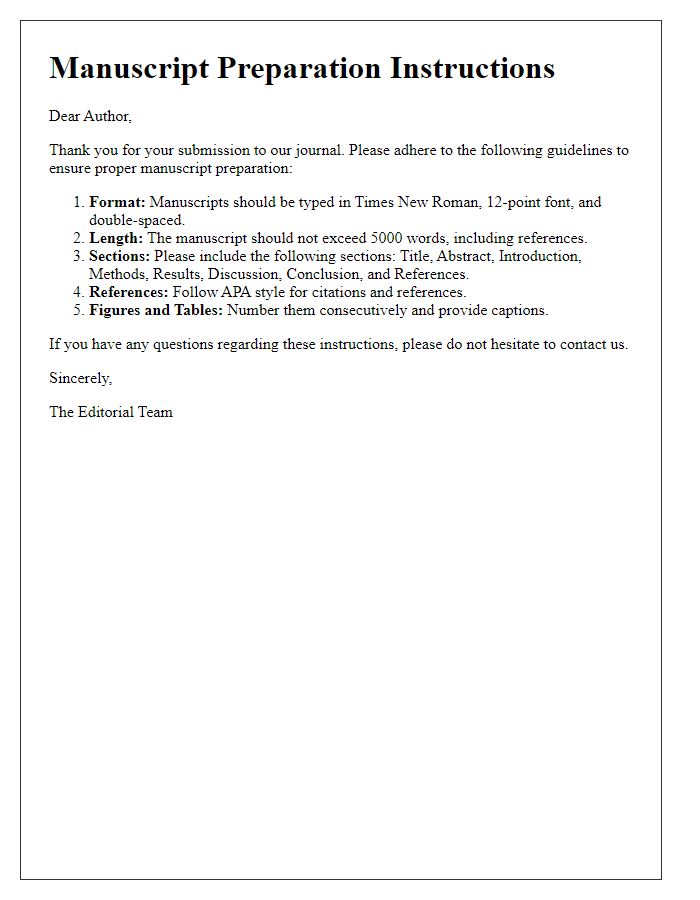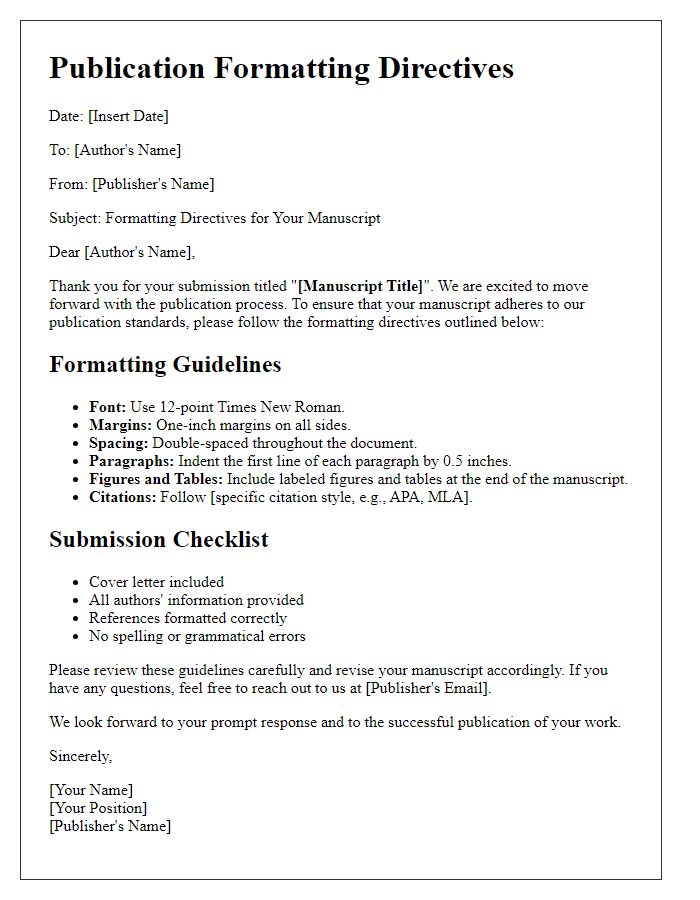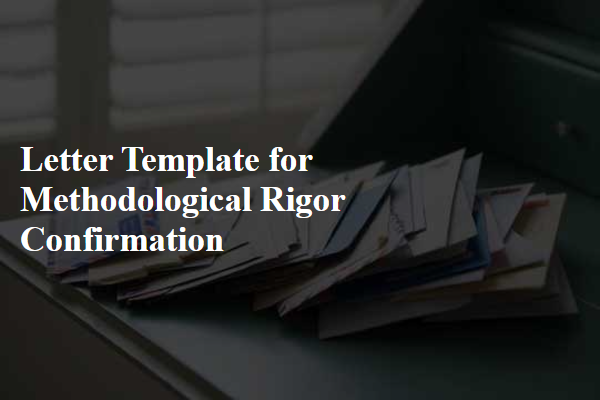Are you ready to dive into the world of manuscript formatting? Understanding the nuances of proper layout and style can make or break your submission, so it's essential to get it right. Whether you're a seasoned writer or just starting out, mastering these guidelines will enhance the professionalism of your work. Curious to learn the tips and tricks for perfect manuscript formatting? Read on!

Manuscript Title and Author Information
Manuscript formatting involves several essential elements to ensure clarity and professionalism in presentation. The manuscript title should be concise yet descriptive, typically no longer than 15 words, clearly reflecting the core of the research. Author information requires listing all contributing authors, including full names, institutional affiliations, and corresponding contact details, often including email addresses for academic correspondence. Proper formatting of this section may involve standard protocols such as bolding the title or italicizing author names, adhering to specific guidelines outlined by journals like the American Psychological Association (APA) or the Modern Language Association (MLA). Ensuring accurate formatting not only showcases attention to detail but also respects the publication standards of venues where research will be submitted.
Abstract and Keywords
An abstract serves as a concise summary of the manuscript, typically ranging between 150 to 250 words. This brief overview should encapsulate the core research question, methods used, key findings, and implications of the study. It allows readers to quickly grasp the significance of the research. Keywords, usually 3 to 7 terms, should identify essential topics and concepts related to the manuscript. These keywords enhance discoverability in academic databases and search engines, facilitating access for researchers in the respective field. Proper formatting is crucial: use a clear font like Times New Roman, size 12, single-spaced, and ensure alignment follows the specific guidelines outlined by the journal or institution, typically visible in the manuscript submission instructions.
Text Formatting and Structure
Manuscript formatting is crucial for ensuring a professional presentation in academic submissions. Text should adhere to specific guidelines, including font type (typically Times New Roman) and size (commonly 12-point). Line spacing should be set to double for readability, while margins of one inch on all sides are standard to provide ample space for annotations. The title page must include essential elements such as the manuscript title, author names, and affiliations, usually centered and formatted in a clear manner. Section headings should be bold and sequentially numbered (e.g., 1. Introduction, 2. Methods) to enhance navigability. In-text citations must follow a specific style guide, such as APA or MLA, and a complete reference list should be included at the manuscript's end. Figures and tables should be referenced within the text and provided on separate pages, accompanied by descriptive captions to clarify their content.
Citation and Reference Style
Manuscript formatting guidelines for citation and reference style are crucial for ensuring academic integrity and consistency in scholarly writing. The American Psychological Association (APA) style, commonly utilized in social sciences, dictates specific formats for in-text citations, such as author-date formats (Smith, 2020), and a corresponding reference list. The Modern Language Association (MLA) style, preferred in humanities, emphasizes parenthetical citations including author and page number (Smith 23). Each style guide provides detailed instructions for formatting bibliographic entries, including vital information such as publication year, page range, and publisher location. Adherence to these guidelines not only enhances clarity but also reinforces the credibility of research published in journals such as the Journal of Educational Psychology or the Modern Language Journal.
Figures and Tables Formatting
Figures and tables in a manuscript play a crucial role in conveying complex data visually. Each figure (e.g., graphs, charts, photographs) should be clearly labeled with a concise title followed by a specific number, such as Figure 1, Figure 2, and so forth, adhering to the numbering sequence within the manuscript. Additionally, captions should be descriptive, allowing readers to interpret the data independently of the text. Tables, which organize data in rows and columns, should also be titled and numbered consistently, e.g., Table 1, Table 2. Each table should include a legend indicating the measurement units and clarify any abbreviations used during data presentation. It is essential to maintain a minimum resolution of 300 dpi for figures to ensure print quality, while tables should be formatted using standard fonts (e.g., Times New Roman, 12-point size) for readability. The positioning of figures and tables should follow their first mention in the text, ensuring a seamless flow and enhancing data accessibility for the audience.













Comments